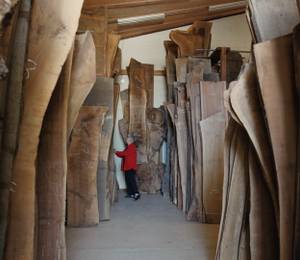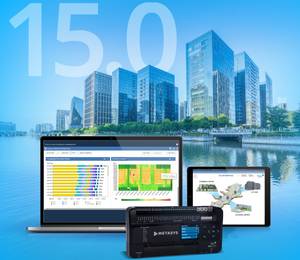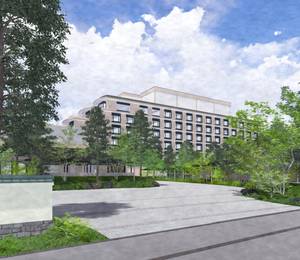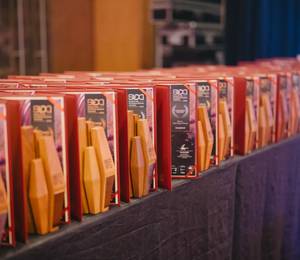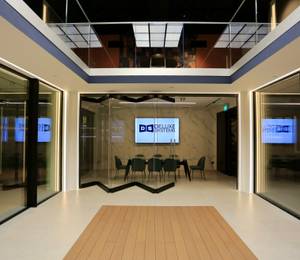In our Jan/Feb 2025 issue, Southeast Asia Building had industry experts tell us about the importance of digital twin technology in architecture and its benefits to construction.
Today, we are pleased to have Anand Natarajan, Head of General Industries, Business Line Industries, ABB Robotics, explain how digital twinning is paving the way for a smarter, more automated future in construction.
Digital Twins: Paving the Way for Robots in Construction
Faced with labour shortages, sustainability demands, and the need for greater efficiency, the construction industry is turning to robotics and automation for the answer. However, the complexity of building sites has long hindered the widespread adoption of robotic solutions. Combined with new off-site building techniques, digital twins—virtual replicas of physical systems—are opening new possibilities for automated construction by enabling precise simulation and testing of robotic processes before deployment.
Conventional construction faces major challenges around the world, including labour and skills shortages, an uphill battle to boost productivity and an urgent need to minimise waste and decarbonise the building industry. Construction companies are therefore looking for new and more efficient ways of doing things, using robotic automation to explore alternative construction techniques such as 3D printing and modular construction.
Automation can augment the capabilities of the construction workforce and reduce the need for skilled labour. It can make working in construction safer and more rewarding, helping with recruitment and retention. By working tirelessly, repeatably and with unrivalled precision, robots can also speed up project delivery, save materials and reduce waste, helping to reduce the environmental impact of construction projects, as well as improving the quality and long-term energy performance of finished buildings.
In response to these drivers, a recent survey for ABB Robotics found that almost 4 in 10 (38%) of construction industry survey respondents say they plan to invest in automation in the short term, while 81% of respondents expect to make the switch to automation by 2030.
A challenging environment
While many products—from pizzas to cars—can be manufactured in the controlled environment of a factory that churns out long runs of similar items, buildings have traditionally been different. Most construction projects take place outdoors and must consider many site-specific factors and designs to suit the available space, terrain and local weather. This relatively uncontrolled variability has been a significant barrier to automation until recently, because it demands the deployment of robotic systems in one-off, bespoke installations that can be expensive and time-consuming to design, deploy and commission.
This situation is now starting to change with the emergence of alternative building techniques such as modular fabrication and 3D printing. In both cases, robots are used as part of automated processes in controlled production environments, where structures are produced indoors before being shipped to the site for final assembly. This is where digital twinning comes in.
Enabling planning, simulation and testing of a robotic installation in a virtual environment, digital twinning software can help eliminate ‘teething troubles’ and significantly reduce the time and cost associated with the roll-out of robotic automation in construction.
Put simply, a digital twin is a virtual model of a physical object, system, or process. Some digital twins model things that have yet to be built, such as new products or systems, while others maintain a two-way data conversation with their real-world counterparts to help control complex systems, such as industrial processes or traffic management systems. The benefit of digital twins in automated construction falls chiefly into the first camp – modelling robotic systems before they are built to ensure their real-world counterparts will perform as required.
Multiple benefits
For example, ABB’s RobotStudio® is a powerful digital twinning tool. By creating a virtual replica of the physical environment, RobotStudio allows for comprehensive simulation, programming and optimisation of robotic systems before they arrive on-site.
Twinning also helps to overcome one of the key barriers to robotic automation in construction, namely a lack of in-house robotics expertise in construction teams. Deploying a well-proven, supplier-developed system such as RobotStudio allows users to work with support from robotics experts to model automation projects quickly and reliably, without the need to recruit their own team of programming specialists. Similarly, twinning tools can provide a virtual platform for training, accelerating skills development and ensuring that construction personnel are well-prepared when their automated systems go live.
Twinning in the cloud allows multiple stakeholders to collaborate in real-time on robot cell designs, regardless of their physical location. This ensures that team members from all the project partners are aligned, leading to more cohesive project execution. Once a project has been completed, the resulting digital twin model can be stored for future use as a template and/or benchmark for future changes.
Tried and tested
With all these benefits, digital twins provide a powerful tool for developing robotic solutions, helping to reduce the time, cost and troubleshooting that might otherwise be associated with automation projects in construction.
Leading-edge firms are already reaping the benefits.
For instance, Sweden’s Skanska has been investigating using robots to produce cages of steel bars (rebars) that help to reinforce concrete structures. Trials using ABB robots and ABB’s RobotStudio have enabled Skanska to slash the production time from 16 hours per tonne to just 1 hour.
Meanwhile, Canadian company Intelligent City has used RobotStudio to model the production of its modular timber building components. Based in Vancouver, the company uses timber-built modules to produce buildings up to 18 storeys high. It combines modular floor and façade panels to create a full structural system, using twinning to model its production cells and the layout of its factory. Intelligent City combines its own Platform4Life (P4L) design software with RobotStudio’s offline programming capability to improve the build performance and achieve a 10 to 15% saving on its total build cost, with projected estimates of approximately 30% in longer-term savings.
3D printing is another technique that is changing the nature of construction, allowing the industry to embrace mass customisation. It provides an ideal way to harness the inherent flexibility and adaptability of robots, which can be ‘trained’ using software to carry out a wide range of different tasks without reengineering the hardware. This flexibility makes it possible to customise or adapt standard building components, providing customers with a greater range of options and eliminating the need to swap between different dedicated machines or make design modifications or alterations by hand.
For example, French company XtreeE has developed an industrialised solution to equip constructors with the technology to produce 3D-printed buildings. XtreeE combines ABB six-axis robots with RobotStudio to produce design-led building elements that cannot be created using normal construction methods. This provides new possibilities for the customisation of structures at a competitive price.
With more than four out of five building firms saying they will transition to automated construction in the next five years, robots are set to become increasingly common on building projects around the world. Digital twinning tools will accelerate the roll-out by making it easier to design and deploy automated systems that are fit for purpose as soon as they arrive on site.
